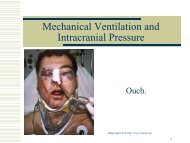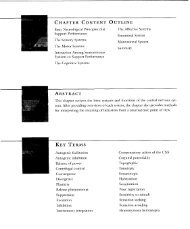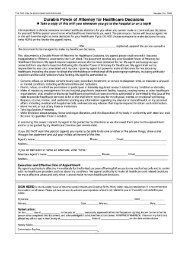Guidelines for the Diagnosis and Management of Asthma
Guidelines for the Diagnosis and Management of Asthma
Guidelines for the Diagnosis and Management of Asthma
Create successful ePaper yourself
Turn your PDF publications into a flip-book with our unique Google optimized e-Paper software.
FIGURE 12. ASSESSING ASTHMA CONTROL AND ADJUSTING THERAPY IN CHILDREN<br />
Key: EIB, exercise-induced bronchospasm,<br />
FEV 1 , <strong>for</strong>ced expiratory<br />
volume in 1 second; FVC, <strong>for</strong>ced vital<br />
capacity; ICU, intensive care unit;<br />
N/A, not applicable<br />
Notes:<br />
■ The level <strong>of</strong> control is based on <strong>the</strong><br />
most severe impairment or risk<br />
category. Assess impairment<br />
domain by patient’s or caregiver’s<br />
recall <strong>of</strong> previous 2–4 weeks.<br />
Symptom assessment <strong>for</strong> longer<br />
periods should reflect a global<br />
assessment, such as whe<strong>the</strong>r<br />
<strong>the</strong> patient’s asthma is better or<br />
worse since <strong>the</strong> last visit.<br />
■ At present, <strong>the</strong>re are inadequate<br />
data to correspond frequencies <strong>of</strong><br />
exacerbations with different levels <strong>of</strong><br />
asthma control. In general, more<br />
frequent <strong>and</strong> intense exacerbations<br />
(e.g., requiring urgent, unscheduled<br />
care, hospitalization, or ICU<br />
admission) indicate poorer<br />
disease control.<br />
Managing <strong>Asthma</strong> Long Term<br />
41





